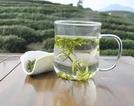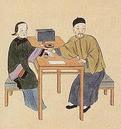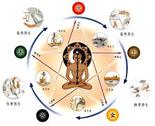Chinese Tea & Health Benefits

There are many health benefits attributed to drinking Chinese tea, ranging from feelings of well-being to near magical cures. For Westerners, much of this interest is focused on ancient claims related to weight loss and more modern claims of cancer-prevention due to tea's anti-oxidant properties. Each person must make their own assessment of the facts. While there are centuries of tradition and empirical evidence, there is little modern scientific consensus that supports the health benefits of tea . Even the effects of anti-oxidants in the body to prevent anything has recently been drawn sharply into focus. We believe that any food product can have positive and/or negative health effects and in varying degrees for different individuals. We do not recommend teas on the basis of health benefits and at this point, do not think it is prudent to recommend tea-drinking for anything other than to enjoy the wonderful flavour and the joyous experience of enjoying tea alone or with friends.
Caffeine

It is common to hear people say “Tea has much more caffeine than coffee”. It is just as common to hear the opposite point of view. In fact with all the varieties of teas and coffees available, the different methods of manufacturing and preparing them and the different amounts consumed, both statements are in need of significant qualification.
So how much caffeine does tea and coffee have? Scientific studies and consumer group reports can both be less than detailed about what teas were used in their research. We will refer to a well detailed study published by the British Government in 2004 (http://www.food.gov.uk/multimedia/pdfs/fsis5304.pdf) for a quick comparison:
All Teas mean 40 mg per serving
Instant Coffee mean 54 mg per serving
Ground Coffee mean 105 mg per serving
It has been generally believed that Chinese green tea has less caffeine than black tea. There is much study and discussion on this subject which suggests that his may not be the case. In fact green tea may have more caffeine than black tea. The confusion has been the result of more broad and unqualified statements that compare apples to oranges and not apples to apples, so to speak.
Most black tea exported to the West is from India and the Camellia assamica plant from which Indian tea is made produces higher levels of caffeine than from the Camellia sinensis variety that is used for Chinese teas. Futhermore, the oxidization process used in making Chinese black teas appears to reduce caffeine content rather than increase it as previously thought. So when you compare Chinese green tea to Chinese black tea, caffeine content in Chinese green teas seems to be higher than in Chinese black teas. Both are less than Indian black teas and all teas are significantly less than coffee.
But there is a way to reduce the caffeine level of any tea if you are sensitive to it. Any tea is best enjoyed using the traditional Chinese method of tea-making known as Gong Fu Cha (Tea With Great Skill). This highly controlled method of tea-making is characterized by using small teapots and multiple brews with very short steeping times of just a few seconds. This intensifies the flavour of tea and reduces caffeine levels. Using this method, the first brew is for washing the leaves and is poured away, so it is not consumed. This also has the effect of washing away much of the caffeine which is highly soluble in water.
To learn about tea-making using the traditional Chinese Gong Fu Cha (Tea With Great Skill) technique, read our guide Gong Fu Cha - The Complete Guide To Making Chinese Tea by Daniel Lui.
So how much caffeine does tea and coffee have? Scientific studies and consumer group reports can both be less than detailed about what teas were used in their research. We will refer to a well detailed study published by the British Government in 2004 (http://www.food.gov.uk/multimedia/pdfs/fsis5304.pdf) for a quick comparison:
All Teas mean 40 mg per serving
Instant Coffee mean 54 mg per serving
Ground Coffee mean 105 mg per serving
It has been generally believed that Chinese green tea has less caffeine than black tea. There is much study and discussion on this subject which suggests that his may not be the case. In fact green tea may have more caffeine than black tea. The confusion has been the result of more broad and unqualified statements that compare apples to oranges and not apples to apples, so to speak.
Most black tea exported to the West is from India and the Camellia assamica plant from which Indian tea is made produces higher levels of caffeine than from the Camellia sinensis variety that is used for Chinese teas. Futhermore, the oxidization process used in making Chinese black teas appears to reduce caffeine content rather than increase it as previously thought. So when you compare Chinese green tea to Chinese black tea, caffeine content in Chinese green teas seems to be higher than in Chinese black teas. Both are less than Indian black teas and all teas are significantly less than coffee.
But there is a way to reduce the caffeine level of any tea if you are sensitive to it. Any tea is best enjoyed using the traditional Chinese method of tea-making known as Gong Fu Cha (Tea With Great Skill). This highly controlled method of tea-making is characterized by using small teapots and multiple brews with very short steeping times of just a few seconds. This intensifies the flavour of tea and reduces caffeine levels. Using this method, the first brew is for washing the leaves and is poured away, so it is not consumed. This also has the effect of washing away much of the caffeine which is highly soluble in water.
To learn about tea-making using the traditional Chinese Gong Fu Cha (Tea With Great Skill) technique, read our guide Gong Fu Cha - The Complete Guide To Making Chinese Tea by Daniel Lui.

